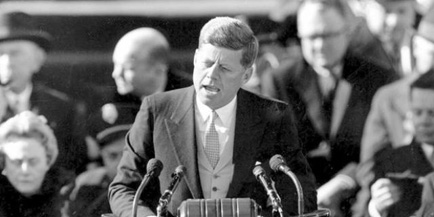TV Recap - The Vietnam War: Episode 2, Part 1
When it came down to deciding what to cover on this, the last week of Shawt
By Mark Light
September 27, 2017
Robert Rheault, a special forces veteran, speaks in an interview about how serious winning hearts and minds really is. If a military operation is successful but destroys a village, it ultimately is self-defeating. No one seemed to grasp this more than John Paul Vann, a lieutenant colonel about whom Neil Sheehan would later write a book.
Vann saw the miltary tactics they were using were beginning to turn the rural population against them. To make change, he started speaking out to the press. Young newspapermen like Sheehan and David Halberstam of the New York Times accompanied the troops out in the field. They found a war that looked far different from the stories being told in Saigon and Washington D.C. The rural population was becoming very angry.
The Viet Cong started running their own rival local governments. They also started fielding well-armed battalions of troops. They in part became well armed by taking away American weapons from the South Vietnamese Army.
Back in Washington, McNamara wanted to measure success. So he demanded all sorts of statistics that the Military Assistance Command, Vietnam (MACV) dutifully supplied. General Harkins of MACV ignored the questions of reporters like Sheehan and the after action reports of officers like John Paul Vann. Anything that didn't imply that Diem's government and its US advisers were winning did not fit into Harkins' worldview.
Tran Ngoc Chau, a former province chief, describes the problem in the countryside as thus "…because the Viet Cong have no uniforms. How could they win? If they killed one real enemy, they might get one replacement. If they killed the wrong man, they would get ten enemies. And they mostly killed the wrong man."
In America, little attention was being paid to Vietnam. But the civil rights movement was gaining huge momentum at this time. In South Vietnam, Diem seemed to be the antithesis of what the US was aiming for itself. While the Communist Party was an oppressive system, Diem basically had created a corrupt dictatorship run by his family. John Paul Vann noticed that the corruption seemed to filter down to the army. South Vietnamese officers were chosen for their loyalty to the Diem regime, not combat skill. The soldiers knew this and began to be reluctant to fight.
All the flaws of the South Vietnamese were exposed in the very beginning of 1963 when the Viet Cong suddenly stood and fought in a little village called Ap Bac. A village called Tan Thoi, linked to Ap Bac by an irrigation dike, had been the site of a Viet Cong radio transmitter. An ARVN division was ordered to go in and take it. The intelligence the US and ARVN had suggested no more than 120 Viet Cong defended it.
John Paul Vann helped draw up the battle plan. 1200 ARVN troops would attack from three sides. When the Viet Cong fled, like they always did before, through the fourth side, they would be pounded by air and artillery.
Continued:
1
2
3
4




